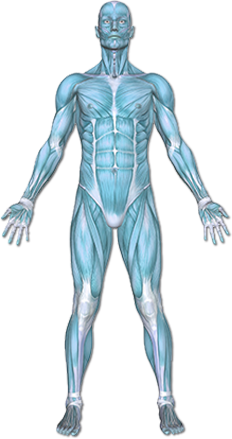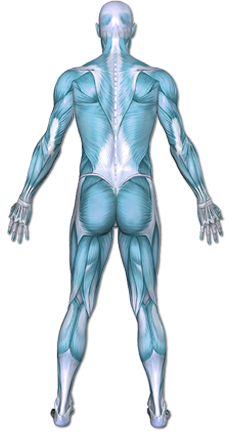Tennis Elbow
Lateral epicondylitis is pain at the elbow. The pain occurs over the bone on the outside of the elbow. There are several muscles and tendons that attach on this area of the bone.
This condition is often called tennis elbow, but it is not restricted to people who play tennis. It can also occur in people with jobs that require repetitive motions such as roofers and carpenters.
![]()
![]()
Copyright © Nucleus Medical Media, Inc.
This content was created using EBSCO’s Health Library
Lateral epicondylitis is caused by damage to a tendon. Tendons connects muscles to bone. Repetitive or stressful movements of the muscles causes strain and pain at the tendon. The tendons associated with lateral epicondylitis are connected to forearm muscles. These muscles are active when you grip something, such as a tennis racquet. Actions that can cause irritation to the tendons of the elbow include:
- Improper technique for hitting a tennis ball
- Improper size of tennis racquet or tension of racquet strings
- Improper golf swing technique or grip of golf clubs
- Doing certain arm motions too much, such as:
- Tennis strokes
- Golf swings
- Painting
- Raking
- Pitching
- Rowing
- Using a hammer or screwdriver
This content was created using EBSCO’s Health Library
Factors that increase your risk of lateral epicondylitis include:
- Playing tennis or golf
- Work that requires repetitive wrist extension and gripping with a closed fist
- Muscle imbalance
- Decreased flexibility
- Advancing age
This content was created using EBSCO’s Health Library
Lateral epicondylitis may develop slowly over time. It may not be associated with a sudden injury. Symptoms include:
- Pain and tenderness on the outside of the elbow
- Possibly pain extending down the forearm
- Tightness of forearm muscles
- Stiffness or trouble moving the elbow or wrist
- Lack of full elbow extension
Pain may be most noticeable when doing activities like:
- Shaking hands
- Turning doorknobs
- Picking up objects with your palm down
- Hitting a backhand in tennis
- Swinging a golf club
- Pressing on the outside of the elbow
This content was created using EBSCO’s Health Library
The doctor will ask about your symptoms and medical history. You may also be asked about your recent physical activity. The doctor will examine your elbow for:
- Pain on the outside of the elbow when:
- Doing certain arm motions
- Pressure is applied on the outside of the elbow
- Stiffness of elbow and wrist movement
X-rays are not usually necessary. However, an x-ray may be needed if the doctor suspects a problem with the bones such as calcium deposits.
This content was created using EBSCO’s Health Library
Your therapist will likely see you in the first two stages of recovery. During stage 1, the therapy will focus on protecting the tendon from additional trauma and reducing inflammation. In stage 2, the therapist will educate you on gentle to progressive stretching exercises in order to convince the tendon fibers to match the line of pull of the muscles. These stretches will be part of a home exercise program that includes stretching, light strengthening and pain management. Each time that you stretch or strengthen you may also be instructed to use ice and rest to reduce the inflammation immediately and not cause another injury. The therapist will evaluate your work or recreational activities and make recommendations for reducing strain to the elbow.
This content was created using EBSCO’s Health Library
To reduce your risk of getting tennis elbow:
- Keep your arm muscles strong. This will decrease the stress on the tendons.
- After a short warm-up period, stretch out your arm muscles.
- Learn the proper technique for activities that require forearm motion.
- If you play tennis, ask a tennis specialist to check your:
- Technique for hitting the ball, especially your backhand
- Racket size, tension of racket strings, and composition of the racquet frame
This content was created using EBSCO’s Health Library
This content was created using EBSCO’s Health Library Resources
- American Academy of Orthopaedic Surgeons
- American Orthopaedic Society for Sports Medicine
CANADIAN RESOURCES:
- Health Canada
http://www.hc-sc.gc.ca/index_e.html/
- Healthy U
http://www.healthyalberta.com/
REFERENCES:
- American Academy of Orthopaedic Surgeons website. Available at: http://orthoinfo.aaos.org/topic.cfm?topic=A00068 . Updated September 2009. Accessed November 7, 2012.
- Józsa LG, Kannus P. Human Tendons. Human Kinetics; 1997.
- Lateral Epicondylitis. EBSCO DynaMed website. Available at: http://www.ebscohost.com/dynamed/what.php . Updated March 4, 2013. Accessed March 6, 2013.
- Nirschl RP, Kraushaar BS. Keeping tennis elbow at arm’s length. Phys Sportsmed. 1996.
- Nicholas Institute of Sports Medicine and Athletic Trauma website. Available at: http://www.nismat.org/ . Accessed November 7, 2012.
- Nirschl RP, Kraushaur BS. Assessment and treatment guidelines for elbow injuries. Phys Sportsmed. 1996;24.
- 11/8/2006 DynaMed’s Systematic Literature Surveillance http://www.dynamicmedical.com/what.php : Bisset L, Beller E, Jull G, Brooks P, Darnell R, Vicenzino B. Mobilisation with movement and exercise, corticosteroid injection, or wait and see for tennis elbow: randomised trial. BMJ.2006;333:939.
- 10/26/2010 DynaMed’s Systematic Literature Surveillance http://www.ebscohost.com/dynamed/what.php : Massey T, Derry S, Moore R, McQuay H. Topical NSAIDs for acute pain in adults. Cochrane Database Syst Rev. 2010;(6):CD007402.
This content was created using EBSCO’s Health Library


